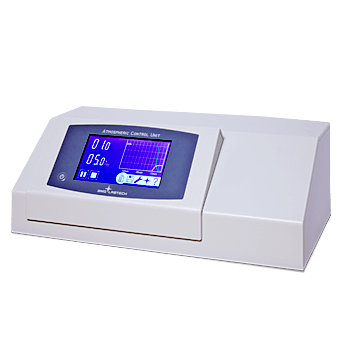
The new Atmospheric Control Unit from BMG LABTECH permits the study of cell metabolism in microplate readers at oxygen conditions matching those found within the human body.
Oxygen is vital for many species, including humans. Such obligate aerobes use oxygen to oxidise substrates such as fats and sugars to provide energy. Oxygen also assists in the generation of the molecule adenosine triphosphate, which contains a high-energy bond that makes ATP a perfect energy transfer molecule.
Although the atmosphere contains approximately 21% oxygen, concentrations in the human body vary between 1 and 14%, and fluctuations in oxygen levels have been implicated in many disease states, including cancer, myocardial infarction and strokes. Also oxygen, by contributing to the production of highly reactive free radicals, contributes to cell damage, especially to DNA.
Given that the majority of in vitro experiments are conducted at constant 21% oxygen it is extremely desirable that new experimental set-ups be designed to study biological changes at the variable oxygen conditions found in the human body.
To this end BMG LABTECH have introduced the Atmospheric Control Unit (ACU) for their CLARIOstar, Omega series and NEPHELOstar microplate readers. The ACU employs nitrogen to decrease oxygen concentrations in the microplate reader to mimic in vivo physiological oxygen levels and oxygen changes.
Nitrogen is used to displace oxygen-rich air inside the microplate reader, so that oxygen concentrations can be decreased to 0.1% within 30 minutes. Ambient oxygen conditions can be recovered within 30 minutes thanks to active venting into the ACU. Constant oxygen pressures can be easily maintained as can carbon dioxide levels in order to stabilise the pH of hydrogen carbonate buffered cell culture media.
Use of the ACU in conjunction with BMG LABTECH’s versatile range of microplate readers, such as the CLARIOstar, provides the ideal set-up for cellular real-time assays as the changes of gas conditions takes place directly at the site microplate reading. A new application note from BMG LABTECH gives detail on the use of the ACU for the detection of both time and dose-dependent effects on cell proliferation and cytotoxicity.
It illustrates perfectly the potential of this experimental configuration for new research approaches in the medical and life sciences, including drug development, for a number of disease conditions, such as cancer or vascular constrictions.
A product flyer and related application note is available to download below.







